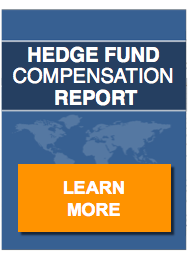It is no secret that institutional investors are the bread and butter of the hedge fund industry. Those doubting that statement should take a moment to review the media coverage surrounding the CalPERS redemptions announced in the fall of 2014. While wealthy individuals certainly contribute to total assets under management, their investments pale in comparison to those of pension funds, university endowments and similar entities.
Investor Satisfaction
Preqin’s recently released Investor Outlook: Alternative Investments, includes 2013, 2014 and 2015 survey results compiled from institutional investor responses to questions regarding satisfaction levels with hedge fund performance. In the Preqin survey, respondents are asked to describe their expectations as exceeded, met or fallen short. Not surprisingly, 2013 was the high water mark for positive responses with 21 percent reporting that their expectations were exceeded. In 2014 that fell to 8 percent, rising to 9 percent in 2015. And not coincidentally, 2013 was also the best year for hedge fund gains.
At the other end of the spectrum, 2014 garnered the highest percentage of “fallen short” responses, 2 percentage points higher than 2015’s thirty-three percent result. The percentage of “fallen short” responses in 2014 and 2015 were each more than double 2013’s results.
However, the most interesting outcome is found in the “met expectations” category. Of the institutional investors surveyed in 2013, 63 percent indicated that their hedge fund met expectations. This falls to 57 percent in 2014 and rises slightly to 58 percent in 2015. The “met expectations” results did not display the year-over-year extremes that are evident in the “fallen short” and “exceeded” responses.
Doing the Math
The best way to illustrate this is by using standard deviation as the metric and applying it to the past three years’ survey results. This method yields the following results.
With a standard deviation of 2.62, those institutional investors who believe hedge funds have met performance expectations are the most stable of the three years covered by the report. This bodes well for hedge fund managers as it appears they can rely, on average, for about 60 percent of their investors to be content with their gains.
Institutional investors who feel that hedge funds have fallen short of expectations sport a standard deviation of 8.52, more than three and one-quarter times the volatility of the group identifying hedge funds as having met expectations.
Lastly, the “exceeded expectations” group revealed a standard deviation of 5.91, about two and one-quarter times the volatility of the “met expectations” respondents.
Closing Thoughts
Obviously the hedge fund manager’s focus must be directed to the most volatile group—which is, of course, the group that feels their fund has fallen short. This is the group most likely to withdraw from the fund, most likely to seek other forms of alternative investment and, as is the case with all disgruntled customers, broadcast their dissatisfaction to everyone that will lend an ear.
Hedge fund managers interested in preserving, never mind growing, assets under management would be best served by a bottom-up approach by shifting the least satisfied investors into the broader group of investors whose expectations have been met. Enhancing performance levels will have the greatest impact on this, the largest, most volatile group and, offer the hedge fund manager his best opportunity to retain assets under management.


